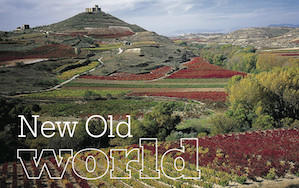Key markets
The key export markets for Spain are: The UK, Germany and the US. With the strong historical, colonial and linguistic connections, South American countries and Mexico are doors that should be easily pushed against.
Spain’s flag-bearer in still wine is undoubtedly Rioja, one of the world’s most famous wine styles with the Tempranillo grape at its heart. There is also the country’s fortified wine, sherry – a unique style mainly sought after by aficiendos these days. Sevilla says: “Rioja is a fantastic ambassador for Spain and the only downside is when people do not realise there is ‘life beyond Rioja’ – ie a whole spectrum of other wines and regions to try alongside Rioja.”
Oscar Urrutia, export director for Rioja’s generic body, the CVNE, says: “The biggest challenge is to increase quality and to enhance authenticity attributes. For others, positioned in low segments, cost-cutting and finding prospectively valuable attributes related to sustainability could be an interesting way forward. “The downside of Rioja is that all Rioja wines are Rioja, and there are vast differences in quality. On top of that, categorisation within Rioja in Crianza, Reserva etc fixes pricing beyond real quality.”
Torres rejoins: “Rioja is a good example of a top-quality region, a top-quality DO which did a great job in building its DO into a brand. But also other DOs such as, for example, Ribera del Duero have been active in this sense and catching up with Rioja. “I think DOs play an important role in today’s world of wine, which is a global marketplace in which it is important to show specific attributes and differences to the consumers.
“So if you do this in a good way, I don’t see a downside to it – on the contrary, it helps all wine producers to open doors and to put Spain as a wine category on the world map,” says Torres.
But there is more to Spain than just Rioja and Tempranillo. Carlos Romero, export director for the Roqueta winery in Catalunya says: “Everybody knows that Rioja is the strongest appellation in Spain, in terms of image and knowledge worldwide.
“But now in Spain you can find around 65 appellations and most of them are fighting to get a place in the world. In our case, recently we launched our winery Lafou Celler in Terra Alta – one of the richest areas for the grape variety Garnacha.”
Iberica ’s Fernando González says: “Rioja is a brand and can sell at any market. Quality can reach outstanding levels but there are other regions and climates that can produce great wines too. At the moment I particularly love Atlantic wines from Galicia, Albariños, Godellos, Ribeiros and Mencia.”
Félix Solís Ramos perceives two patterns in planting: “Autochthonous grapes and international varieties. Spain has a rich terroir and superb weather conditions for vineyards, so we can talk about successful stories of adaptation.
“Wine style and consumption is moving to ‘simpler’ wines. This means young, fruity wines and slightly oaked. Of course, our reservas and grandes reservas are appreciated but in much lower volumes.” As to regions, he says: “Ribera del Duero and Rueda are ‘younger’ DOs that are active in their national and international campaigns.”
Delfi Sanahuja (below left), chief enologist at Castillo Perelada, says: “The challenge for wineries based in appellations other than Rioja, like us, Castillo Perelada in Empordà, North Catalonia, is to make us known and one of the means is to produce wines that always have to ‘over deliver’ in order to find a place.
“Priorat, for example and, more recently, Empordà are the perfect examples of areas where strong investments and research have been undertaken to create high-quality wines as well as excellent value wines. In our case, in order to ‘exist’ and be put on a map, we are working hard on the following three elements: variety/soil/climate adequation,” says Sanahuja.




